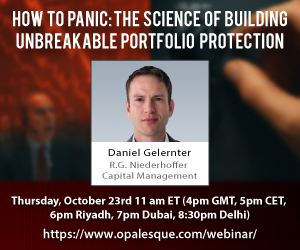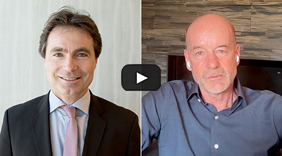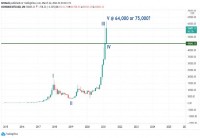|
Opalesque Industry Update - Approximately 45% of hedge fund managers in the United States and approximately half of hedge funds in Europe and Asia say one or more of their funds remain below their “high-water” marks. The relatively large number of hedge funds struggling to reach prior high-water marks in performance is just one of several findings from the 2010 Greenwich Associates/Global Custodian Prime Brokerage Study demonstrating the extent to which the hedge fund industry is still feeling the after-effects of the global financial crisis — despite a period of strong investment performance that has helped the industry put some of the worst consequences of the crisis behind it. Almost 55% of the U.S. hedge funds participating in the Greenwich Associates/Global Custodian Study and 35-40% of hedge funds in Europe and Asia reported performance of 20% or better from the first quarter of 2009 to the first quarter of 2010. Around the world, nearly 70% of hedge funds delivered investment returns of 11% or better and nine out of 10 reported positive performance for the 12- month period. “The fact that so many funds remain under their high-water marks after a period of historically strong market performance demonstrates how great an impact this crisis had on hedge funds of all sizes and strategies,” says Greenwich Associates consultant John Feng. “While many aspects of the market are normalizing, our study results show that the events of the past two years have resulted in lasting changes from pre-crisis practices.”
Lower Leverage Levels Nevertheless, these leverage levels remain well below the 2.3 average reported by all hedge funds and the 3.4 average among fixed-income funds in 2007. “Looking ahead, hedge funds are hopeful that conditions will improve — especially hedge funds in Asia,” says Greenwich Associates consultant Tim Sangston. “Thirty seven percent of Asian hedge funds expect to increase leverage ratios in the next 12 months, as do 30% of European hedge funds and 23% of U.S. funds.”
Source of Assets The only type of institutional assets that increased as a share of hedge fund AUM over the period were public pension fund assets, which grew to 9% of total assets in 2010 from 8% in 2009. Of course, high-net worth individuals and family offices remain the primary source of assets for smaller hedge funds, accounting for 61% of assets among funds with less than $100 million in AUM. As institutional assets overall declined as a share of AUM among large hedge funds, the proportion of assets sourced from high net worth individuals and family offices grew. Among funds with at least $1 billion in AUM, family offices and high net worth investors together accounted for 21% of total assets in 2009. That share increased to 24% in 2010. Although the change in institutional assets as a share of the asset base of large hedge funds was modest, the decline marks a reversal from the years leading up to the global market crisis, during which time institutional assets grew steadily as a share of AUM among hedge funds in this large category. This shift can be partially attributed to a change in the population of this fund segment. The number of funds with $1 billion or more AUM grew over the past year as asset values rebounded with market valuation. This brought some of the under-$1 billion AUM funds — among which institutional assets are less prevalent — into the $1 billion-plus segment. The fact that these newcomers are sourcing a smaller share of assets from institutions might also be an indicator of some shift in institutional appetite. “Greenwich Associates’ research among pension funds in Europe and the United States shows that, while many public pension funds are looking to close serious funding shortfalls by increasing allocations to hedge funds and other investments with the potential to deliver relatively high levels of alpha, corporate pensions are acting to ‘de-risk’ portfolios,” says Greenwich Associates Product Manager Kevin Kozlowski. Together, the trends of a normalized market environment, strong investment performance and shifts in composition of both the hedge fund industry itself and its investor base have increased the importance of capital raising among hedge fund managers. “Our research demonstrates that, over the past 12 months, hedge fund managers have begun to place a greater emphasis on capital introduction capabilities when evaluating and selecting prime brokers,” says John Feng. kb |
Industry Updates
45% of US hedge funds say one or more fund still under high water mark - Greenwich Associates
Thursday, October 28, 2010
|
|





 RSS
RSS









